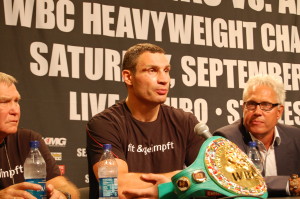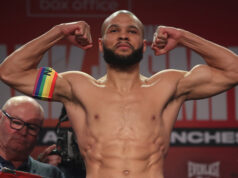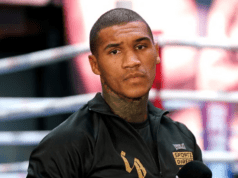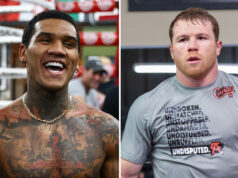As I wrote in my comparison of Golden Age Heavyweights vs. Modern Heavyweights, some believe that bigger is better and that a reasonably athletic, big heavyweight automatically beats a small one. According to such logic, the two Klitschko brothers are not only the dominant heavyweights of this era, but arguably the greatest of all-time. This article is the first installment in a two-part series examining the merits of that claim.
Despite his four year retirement from 2004 to 2008 and the fact that younger brother Wladimir Klitschko is often acknowledged as the more athletic of the two, Vitali Klitschko is often thought to be the better fighter of this Ukrainian pair. The reason is simple: Vitali is more willing to mix it up and get physical than his younger brother. If Wladimir appears at the top of the heavyweight rankings and is acknowledged as “the man” in the heavyweight division today, it is largely because he has more belts and has been more consistently active. Most of the time, when boxing analysts speculate on which brother is the best, big Vitali comes out on top.

Klitschko is a good fighter with a solid set of assets. He stands over 6’7″ tall and weighs in at around 250 lbs., has mastered the stand-up, straight-punching European style of boxing, wields great strength and power, and is remarkably mobile for a man his size. Dr. Ironfist is also a consummate professional. The Ukrainian is willing to get physical if the situation calls for it, and always shows up for a fight in superb condition. Against this, it must be said he is fragile and prone to injury. While the man can take a punch, he tends to get hurt in other ways both inside and outside the ring.
Questions of how Klitschko would stack up against his predecessors at the top of the heavyweight division are more easily answered than one might imagine, because he was the last man to fight the previous world champion, Lennox Lewis. Klitschko was beating Lennox Lewis at the jabbing game early on, and throughout the fight was the busier fighter. That is not surprising, because Klitschko was the hungry challenger and always shows up for fights in good shape. Lewis, on the other hand, had an eye on retirement and had prepared for an easy fight against underachiever Kirk Johnson. He weighed in at his career high that night, and it showed. When Lewis was unable to establish his jab, he got physical with Vitali and started landing the cleaner, harder shots. Lewis opened a cut over Klitschko’s right eye in the 3rd, and nailed it hard at every opportunity thereafter. The cut became a sickening wound, leading the fight to be stopped and Lewis declared the winner.
One thing about that bout should be crystal clear to anyone who saw it and was familiar with Lewis’s past career. Klitschko landed as many clean right hands on Lewis as anyone ever did, and while Lewis was staggered in Round 1, he was never in serious trouble. Hasim Rahman was able to flatten Lewis with his right only two years before, which makes one wonder if Vitali’s enormous size fully translates into power the way so many thinks it does. Klitschko can crack, of that there is no doubt, but it is safe to say he at least doesn’t hit harder than the smaller Rahman.
Also, when Klitschko mixed it up and got physical with Lennox Lewis, he came up short. Anyone who pleads that Klitschko was ahead on the cards at the time or would have easily won a rematch should both re-read the rules of boxing and then follow that by digging up what Emmanuel Steward has said about that fight. Steward trained Lewis and went on to train both Klitschko brothers, so he knows this matter as well or better than anyone. While Steward has never commented on what might have been in a rematch, it is clear he does not consider Lewis’s victory in the original a mere accident. It stands to reason that although aging, if Lewis had appeared that night prepared to fight Klitschko and not Kirk Johnson, the results would have only been more, rather than less, decisive for Lewis.
So Klitschko lost to Lewis and was only able to ding, rather than dent the champ’s whiskers. Lewis, in turn, was stretched to the limit by Ray Mercer and treated Evander Holyfield with considerable respect in two fights. Neither of these men were “super heavyweights,” but were instead were of a size typical of most heavyweights since the late 1960s. Hasim Rahman and Oliver McCall weren’t Everest-scale giants either. Styles make fights, but clearly it is possible for men to overcome 25 lb-weight and three-inch height advantages and pose a threat to a much bigger man. Is Vitali Klitschko a good fighter? Yes, and he without a doubt bestrides the modern division like the colossus he is. Does that mean Dr. Ironfist would automatically wipe the floor with the smaller men of past decades? Nope. It simply means the smaller men of his own generation aren’t all that good. Any heavyweight would find a fight with Vitali Klitschko to be a literal uphill struggle, but that does not automatically mean that reaching the top and declaring victory would be outright impossible.










